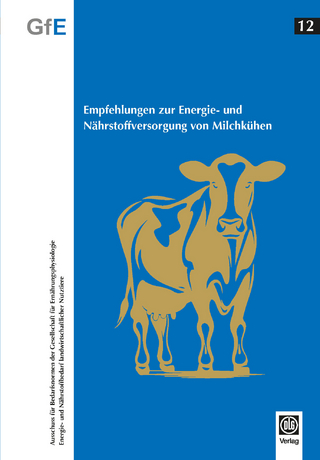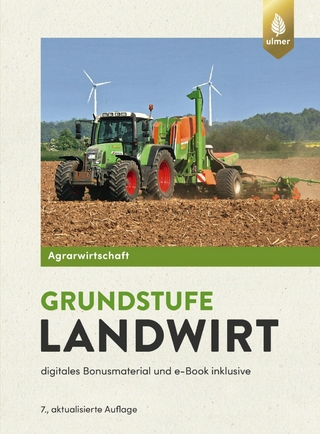
Maya Subsistence
Academic Press Inc (Verlag)
978-0-12-259780-0 (ISBN)
- Titel ist leider vergriffen;
keine Neuauflage - Artikel merken
?Contributors
Preface
Dennis Edward Puleston (1940-1978): Maya Archaeologist
I Ecological Models for Early Maya Adaptations
1 Cultural Evolution and Ecological Succession in the Valley of Guatemala: 1500 B.C.-A.D. 1524
Introduction
Chronology
The Test Squares
Settlement and Population History of the Valley of Guatemala
Agricultural History of the Valley of Guatemala
Conclusions
2 An Ecological Model of the Early Maya of the Central Lowlands
Introduction
Pioneer Maya and the Tropical Forest Habitat
Potential Exports of the Central Lowlands
Organizational Characteristics of Tropical Forests and Their Procurement Systems
Organizational Characteristics of the Maya Export System
Evaluation of the Tropical Forest Export Model
Summary
II Archaeological Investigations of Preclassic and Classic Maya Subsistence
3 Prehistoric Agricultural Systems in El Salvador
Introduction
Cultural History and Agricultural Systems
Summary and Conclusions
4 Subsistence and Society in Eastern Yucatán
Introduction
Part 1
Part 2
Conclusion
5 Subsistence, Trade, and Development of the Coastal Maya
Introduction
Preclassic Canalization at Cerros, Northern Belize
Spatial Disposition of Feature
Excavation of Features
Interpretations
Speculation
Conclusions
6 Ancient Lowland and Highland Maya Water and Soil Conservation Strategies
Introduction
Lowland and Highland Watersheds
Lowland Hydraulic Techniques
The Maya Highlands
Summary
III Contributions of Geography and Soil Science to an Understanding of Ancient Maya Subsistence
7 Hydraulic Agriculture in the American Tropics: Forms, Measures, and Recent Research
Introduction
Forms of Hydraulic Agriculture and Minor Water-Management Techniques
The Measurement of Raised Fields
Recent Research on Precolumbian Raised-Field Agriculture in Latin America
Summary
8 Prehispanic Agricultural Use of the Wetlands of Northern Belize
Introduction
Wetlands of Northern Belize
Ground Verification of Wetland Patterning
Related Field Investigations
Reconsiderations
Problems in Assessing the Significance of Maya Raised Fields
Summary and Conclusions
Postscript
9 The Origin of Raised Fields near San Antonio, Belize: An Alternative Hypothesis
Introduction
Physical Setting
Methods
Examination of Strata from Test Pits
Discussion
Summary and Conclusions
IV Maya Subsistence in the Postclassic, Colonial, and Modern Eras
10 The Plant World of the Sixteenth- and Seventeenth-Century Lowland Maya
Introduction
The Sixteenth- and Seventeenth-Century Sources
The Size of the Sixteenth- and Seventeenth-Century Fields
Maya Sixteenth- and Seventeenth-Century Plant Categories
Maya Classification of Soils and Environmental Features
Continuity and Change: The Impact of Nahua and Arawak
Summary and Conclusions
11 Agriculture and Trade in the Colonial Period Southern Maya Lowlands
Introduction
The Southern Maya Lowlands in Colonial Times
Patterns of Agricultural Production
Implications of the Model
12 The Traditional Role of Women and Animals in Lowland Maya Economy
Introduction
Ritual Feasts
Trade and Tribute
Dogs and Pigs
The Economic Role of Maya Women
Conclusions
13 The Contemporary Role of Women in Lowland Maya Livestock Production
Introduction
Methods
Traditional Methods of Animal Production
Contemporary Festivals
Personal Independence and Family Security
Women as Entrepreneurs
Conclusion
14 Experiences in Traditional Hydraulic Agriculture
Introduction
The Balancán-Tenosique Plan
Experiment in El Espino, Tabasco
The College of Tropical Agriculture
The Cultural Institute of Nacajuca
The Camellones Chontales
The Lagoon of Tecocomulco
Chinampas of Laguna de La Mancha
Conclusion
V Overview
15 Maya Subsistence: A Commentary
Appendix 1 Dennis E. Puleston: A Tribute
Appendix 2 The Role of Ramón in Maya Subsistence
Introduction
Slash-and-Burn Agriculture
The Ramón Survey
Productivity
Nutrition
Labor
Settlement Patterns
Index
| Erscheint lt. Verlag | 31.12.1982 |
|---|---|
| Verlagsort | San Diego |
| Sprache | englisch |
| Gewicht | 910 g |
| Themenwelt | Weitere Fachgebiete ► Land- / Forstwirtschaft / Fischerei |
| ISBN-10 | 0-12-259780-X / 012259780X |
| ISBN-13 | 978-0-12-259780-0 / 9780122597800 |
| Zustand | Neuware |
| Haben Sie eine Frage zum Produkt? |
aus dem Bereich


